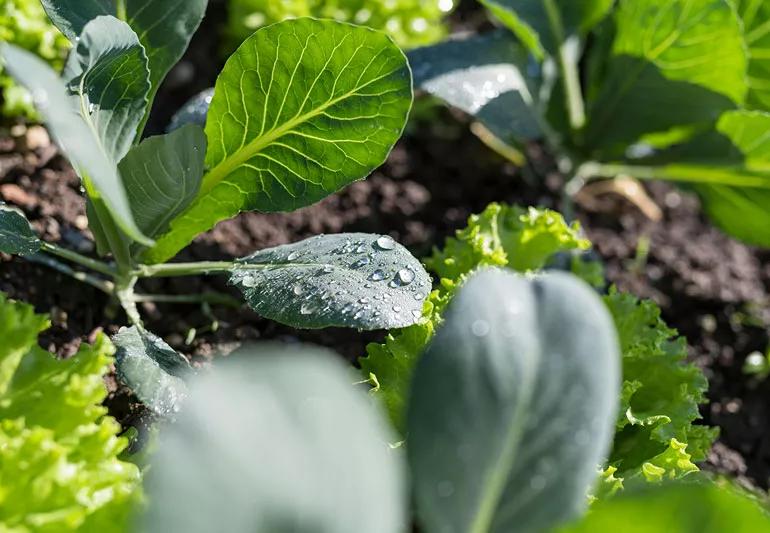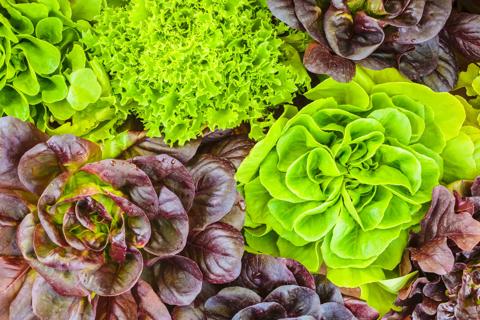These small-but-mighty veggies pack a powerful nutritional punch

Bigger is not always better, at least not when it comes to vegetables.
Advertisement
Cleveland Clinic is a non-profit academic medical center. Advertising on our site helps support our mission. We do not endorse non-Cleveland Clinic products or services. Policy
Microgreens — the seedlings of edible vegetables and herbs — are under 3 inches tall. But they’re more than just a cute garnish.
“Microgreens deliver big flavor and provide more concentrated nutrients than their full-grown counterparts,” says registered dietitian Kayla Kopp, RD, LD. “Adding them to your favorite dish can take a balanced diet to the next level.”
Microgreens are young vegetables harvested anywhere from one to three weeks after planting. That’s when the first true leaves — which undergo photosynthesis — start to come out.
But don’t confuse microgreens with sprouts, which also offer a nutritional punch:
“The leaves of microgreens capture energy from the sun and collect the water and nutrients the plant absorbs from the soil,” Kopp explains. “And because they are still young and growing, the leaves are rich in nutrients.”
The nutritional benefits of each type of microgreen depend on the plant. But research shows that microgreens may contain 4 to 40 times the nutrients of mature plant leaves.
Advertisement
“Vegetables are already high in vitamins, but the minerals and phytochemicals in microgreens offer even more nutritional value,” Kopp continues. “As a bonus, many of the nutrients in microgreens act as antioxidants, with the power to prevent cell damage.”
Research on microgreens is still in the early stages, but based on what experts know about the benefits of vegetables, they may:
People with Type 2 diabetes can’t control the amount of sugar (glucose) in their blood — their cells don’t remove sugar from their blood like they’re supposed to. But microgreens can help with regulating your blood sugar.
Research on animals shows that broccoli microgreens improve insulin resistance so sugar leaves the blood to enter cells. Fenugreek microgreens — a legume that’s a staple in Indian cooking — may also improve how well cells take in sugar by 25% to 44%.
Polyphenols are plant-based substances with antioxidant properties. They provide several health benefits — and microgreens have lots of them. Scientific evidence shows that polyphenols may improve how well you think and reason (cognition) and even prevent or delay the beginning of neurodegenerative diseases like Alzheimer’s disease.
Polyphenols are also linked to a lower risk of heart disease. More specifically, studies in the lab show that when red cabbage microgreens are added to a high-fat diet, they reduce body weight, triglycerides and LDL (bad) cholesterol — all risk factors for heart disease.
Brassicaceae microgreens contain sulforaphane. One of sulforaphane’s many health benefits is cancer prevention. Research suggests that adding Brassicaceae microgreens to a balanced diet may help prevent, block or possibly reverse cancer growth. One study finds this family of microgreens to be especially useful in preventing colon cancer.
Lutein is a powerful antioxidant found in spinach, broccoli, dandelion and cress microgreens. It may be especially beneficial for eye health in older adults. Studies show that lutein may improve or prevent age-related macular disease.
Iron deficiency is common and the leading cause of anemia worldwide. Many microgreens, including lettuce and those in the Brassicaceae family, are rich in iron. But studies show that fenugreek microgreens have the highest levels of iron.
Microgreens pack powerful flavors for such little plants. The taste varies and can be sweet, spicy, earthy or bitter — all depending on the vegetable.
Advertisement
“You can grow microgreens from any herb or vegetable. Some people even grow grains (like oats and wheat) or legumes (like lentils) as microgreens,” Kopp says. “Most microgreens taste, or have an aftertaste, similar to their mature plant.”
Experts categorize microgreens into different plant families, which include:
Microgreens offer the most nutritional bang for their buck when eaten raw, says Kopp. You can add them to your diet in countless ways, including:
Advertisement
Learn more about our editorial process.
Advertisement

This root veggie can also benefit your gut, heart and eyes

As the stalky vegetable breaks down, it leaves behind sulfuric byproducts that can make your pee stink

Most of the time, beeturia is a curiosity, not a concern

This cruciferous veggie boosts your bone, eye and heart health and contributes to a lower risk of cancer

Some diets shun them, but research hasn’t concluded that they’re harmful

This versatile type of seaweed may help support weight loss, bone health and cancer prevention

Pickles are low in fat and calories and rich in some vitamins and minerals, but they’re usually high in sodium

Lettuce is a versatile vegetable loaded with antioxidants and good-for-you nutrients

Babies can get congested easily, but you can calm their cough by keeping them hydrated, using nasal drops and running a humidifier

Weight loss may cause loose, sagging skin and muscle loss to your rear

Several conditions, like vitiligo and fungal infection, can cause a loss of pigmentation, leading to white spots or patches on your skin